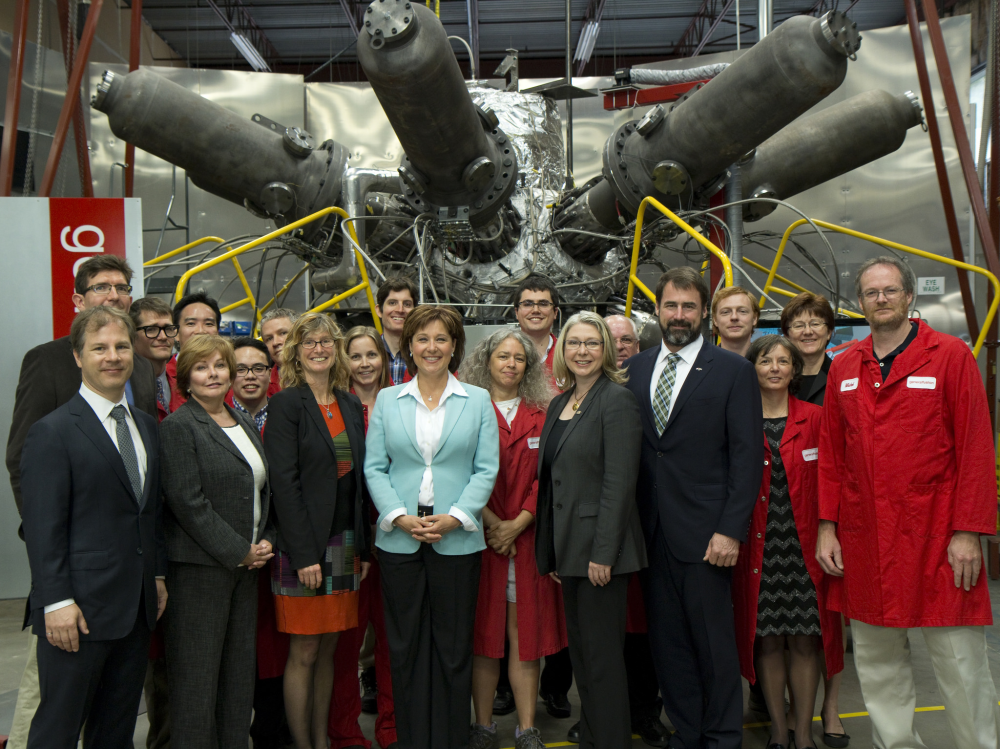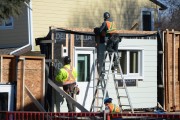As a member of B.C.’s Climate Leadership Team, it was a nice milestone to see the team’s recommendations publicly released last week. We spent five months figuring out how the B.C. government could reduce carbon pollution, grow the economy and regain its status as a climate leader.
I’m happy with the package of recommendations, and I think implementing them would represent a substantive step forward for the province. Here are my highlights.
1. B.C. doesn’t need to wait for other jurisdictions
A common refrain you may hear from some parts of the business community is that B.C. should wait for other jurisdictions before implementing new climate policies. As a team, we rejected this notion and found better options that allow B.C. to take steps forward without waiting for others to act. In some cases, this meant aligning B.C.’s policies with leading examples in other jurisdictions (e.g. joining California and eight other states in adopting a zero-emission vehicle standard). In the case of the carbon tax (which we recommended increasing), it meant new tools to temporarily protect sectors of the economy that would be at a competitive disadvantage (more on this below). In short, if B.C. wants to lead, it has no excuse not to.
2. The carbon tax is part of a fiscal package
The recommendations to restart annual increases in the carbon tax and expand the coverage were the two most important recommendations for me, but it’s important to stress that these were part of a larger fiscal package. The inclusion of provincial sales tax cuts, targeted measures to protect emissions-intensive and trade-exposed sectors (see below), support for low-income and northern/rural households, and other investments were critical in achieving our objectives and building support across the team.
3. We found near-consensus across 32 recommendations
I questioned if a consensus was going to be possible when the 17 members from industry, the environmental community, local governments, academia, First Nations and the provincial government first met. To the team’s credit, and with support from B.C. government staff, we managed to get there on 31 recommendations, with one member unfortunately unable to support the carbon tax increase recommendation. While it would have been great to get to full consensus, the significance of how close we got given the diversity of the team shouldn’t be understated. With broad support for a substantive package of new climate policies, the government has a huge opportunity to get B.C. back on track with its climate objectives.
4. The economy does fine under our recommendations
With a mix of policies that would cut the province’s carbon pollution so significantly, many will wonder what that means for the economy. The short answer is “not much” as provincial GDP is projected to grow at 2.1% per year with all of our recommendations. That growth is marginally slower than a “no new policies” scenario (B.C. reaches the same 2050 GDP about six months later with our recommendations), but that’s a bargain relative to the huge costs from a disrupted climate. If you’re someone with a healthy skepticism of modelling results, real-world experience backs up the projections: in the first phase of B.C.’s Climate Action Plan, B.C. led the country in efforts to reduce per capita fossil-fuel use, while GDP growth exceeded the national average.
5. A new acronym is born: EITE
One of the central challenges we wrestled with in developing the recommendations was how to deal with emission-intensive, trade-exposed (EITE) sectors. These are the big industries in the province that are predominantly competing with other jurisdictions for market share. An outcome we all wanted to avoid was one in which a mill or a mine moved to a competing jurisdiction because of B.C.’s climate policies— this wouldn’t change global carbon pollution and it wouldn’t help B.C.’s economy.
I expect this will be a growing conversation in B.C. in the coming months, and there are two things you should know about EITEs as that discussion unfolds. The first is that they are a relatively small part of B.C.’s economy — between 2% and 9% depending on how strong B.C.’s climate policy is relative to competing jurisdictions. The second is that B.C. can design approaches to maintain their competiveness while it moves ahead with stronger climate policies — something the province has already done with a new program to help the cement sector transition to cleaner sources of energy. If I’ve whetted your appetite for discussion about EITEs in B.C., check out my longer post on the topic.
6. Higher carbon taxes don’t mean higher household costs
If our recommendations are followed, B.C. will quickly move to a grid powered by 100% renewable electricity, and buildings and vehicles will be powered by the efficient use of renewable energy. That means that, in the not-to-distant future, the average British Columbian won’t be burning any fossil fuels. Instead of filling up at the gas pump, they’ll be charging up their battery. Instead of annual furnace inspections, they’ll need to maintain their heat pump or solar panels. The bottom line is that the carbon tax will stop mattering to the average household because they won’t be paying it. Sure, people will still have other taxes to grumble about, but paying the carbon tax will be a thing of the past just like natural gas, gasoline and diesel bills.
7. LNG, the elephant in the room
The province’s LNG aspirations, and the extent they represent a barrier to climate progress, have been an important point of debate around the recommendations since they were released. The team concluded that if some LNG development went ahead, the 2050 target, and a new 2030 target, could still be met if the climate policies we’ve recommended are implemented. Those policies include increasing and expanding the carbon tax, and new rules for methane emissions, They would collectively result in any LNG development using renewable electricity instead of gas and significantly reducing the amount of methane lost as gas is processed and transported.
As a team, we did not pass judgement on LNG one way or another beyond stressing the need for those policies. Without them, any significant LNG development would undermine B.C.’s ability to reduce carbon pollution. Beyond the need for stronger policies, I would personally prefer to see the province put more of its economic development efforts into non fossil-fuel opportunities. That said, I’m still happy to support the package of recommendations we’ve made to the province because of the progress they would represent for efforts to limit carbon pollution from LNG and from the rest of the economy.
8. Let’s get on with it
The team has done a lot of work to develop a consensus across a diverse set of interests, and that consensus represents a huge opportunity for the province to move ahead on climate action. The province will be consulting on its updated climate plan starting in January 2016, and I encourage people to engage in the process and help B.C. regain its status as a climate leader.







